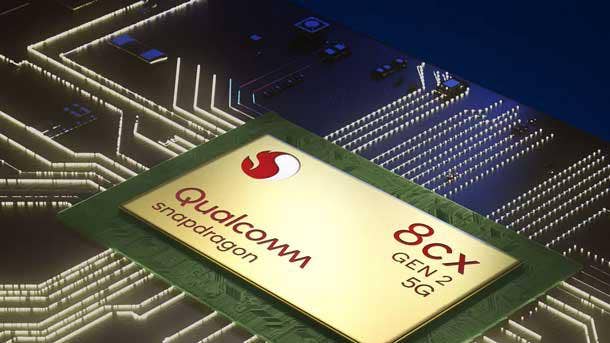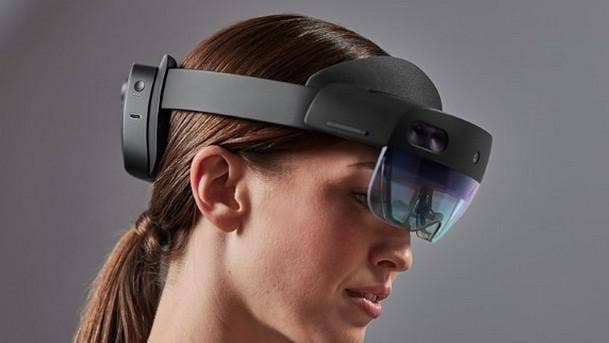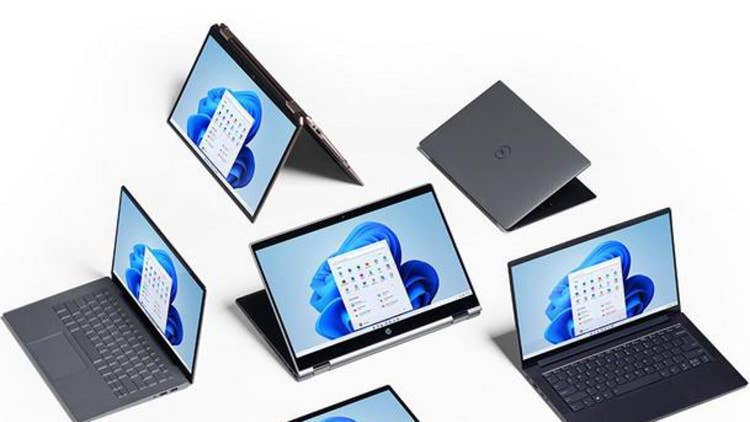CES 2022: Qualcomm CEO Cristiano Amon’s 10 Boldest Statements
‘It’s an exciting time for Qualcomm,’ CEO Cristiano Amon said. ‘And we are becoming the partner of choice at the edge for digital transformation.’

In one of the few in-person press conferences held during CES 2022, Qualcomm CEO Cristiano Amon told a crowd of journalists and analysts that Arm-based PCs are here to stay and that his company will use its expertise in telecommunications to grow its offerings around augmented reality, virtual reality and automotive technology.
On Arm PCs, Amon told the crowd that “there was a lot of skepticism about the transition of the PC to Arm.”
“But it’s happening,” Amon said. “It’s inevitable.”
As for his company’s investments in augmented reality—including an expanded partnership with Microsoft around AR glasses—and car technology with new partnerships with Volvo, Honda and Renault, Amon said the company’s moves fit a strategy to reach a $700 billion market in the next decade in what he calls “the connected intelligent edge.”
“It’s an exciting time for Qualcomm,” Amon said. “And we are becoming the partner of choice at the edge for digital transformation.”
[Related: CES 2022: Announcements, News, And Product Coverage ]
Arm-based CPUs continue to take share from x86 CPUs by some estimates. Mercury Research estimated that Arm-based CPUs grew to roughly 8 percent of the overall PC CPU market in the third quarter, up from approximately 7 percent in the previous quarter and significantly higher than the less than 2 percent share in the same period last year.
Here’s more of what the CEO had to say on Qualcomm and its future.

The ‘Connected Intelligent Edge’ Opportunity
We are always going to be the company defining the pace of technology in mobile. We are always going to be the company focused on mobile. But there’s more to Qualcomm.
Where we are right now, we see this opportunity of billions of smart devices—not just connected devices, smart connected devices that are connected to the cloud 100 percent of the time, and significantly impacting industries.
And that’s how we look at this very broad opportunity that we call the connected intelligent edge, which is really driving a lot of growth for Qualcomm and driving a lot of innovation based on our technology road map. The time for Qualcomm is now.
We are convinced of the opportunity with the cloud. We know that the cloud will continue to grow. You look at all the projections right now. You look at all the hyperscalers’ projection evaluations. For that to be true, you need the edge. You need devices at the edge that are going to be connecting and sending data to the cloud.
So the connected intelligent edge opportunity is real. It’s massive. And when you look at the trends, it’s not just about connectivity. It’s about connectivity in efficient and smart processing that is going to happen at the edge.
By 2025, 64 percent of all data will be created outside traditional data centers. And then the data gets sent to the data center, and it is driving this growth … That’s the opportunity for Qualcomm—the company that is going to power the edge.

A $700 Billion Market Beyond Mobile
Snapdragon continues to set the bar for premium-tier Android smartphones. Our mobile strategy is clear—it is about focusing on driving flagship and premium and high-tier performance in Android.
And we saw today a number of announcements already at CES, some new devices from our customers. I’ll just name a few—Xiaomi, OnePlus, Realme and many more that announced devices over Snapdragon 8 Gen 1 and other chipsets. We continue to be the No. 1 in connectivity in the performance of AI. … [When it comes to phones], the performance per watt is extremely important. And we see that reflected as we bring AI to all the other devices—from automotive, where you cannot put a server on the trunk of a car, all the way to a number of devices in the IoT space that need to be efficient.
Sound, camera, security and gaming—as mobile becomes mainstream gaming. So we’re very excited about what’s happening with the Snapdragon road map with 8 Gen 1. And with that, we’re going to go into beyond mobile. … Within the next decade, we have an opportunity to serve a market of $700 billion in size as the connected intelligent edge gets scaled. It’s an exciting time for Qualcomm. And we are becoming the partner of choice at the edge for digital transformation.

Arm-Based Computing ‘Inevitable’
One thing that is unique about Qualcomm: Because of our horizontal business model, we have the opportunity to create ecosystems and to move forward with broad partnerships because we’re not a company that is focused on ‘one company only innovates.’
We’re not vertical, we’re truly horizontal. And because all of the companies are innovating together, we see the power of the Qualcomm ecosystem. Over the long run, it has proven to be correct.
And I’ll give an example. It was not too long ago—it was just a few years ago—that we … announced that we’re building a coalition to accelerate 5G. I feel the same way about next-generation computing devices. … The transition to Arm is real.
So we see broad support from Microsoft in the PC ecosystem. Lenovo, HP, Acer and Asus are part of the momentum, building within Arm Windows PCs, powered by Snapdragon.
Part of the announcement today about the ecosystem, getting together with a clear intention to make Windows Arm PCs a reality, we are also taking that and empowering the enterprise.
So within the global 5,000 enterprises, there are 200 now already testing, deploying Windows with Snapdragon devices within their environment. We’re just showing a few. So this stuff is happening.
I know there was a lot of skepticism about the transition of the PC to Arm, but it’s happening. It’s inevitable. …
Also, more and more—I’m sure all of you here today will agree with that—the data is moving to the cloud.
So the ability to access your data at a high speed, no matter where you are, becomes extremely important, too.

AR Partnership With Microsoft
We are also announcing today an expansion of our collaboration with Microsoft to accelerate augmented reality and mixed reality.
This announcement of this collaboration builds on a long-standing relationship. … We’re announcing that we’re developing a custom augmented reality Snapdragon chip for next-generation power-efficient, very lightweight AR glasses for the Microsoft ecosystem, and we’re integrating into that chip platform software from both companies—the Microsoft Mesh platform and the recently announced Qualcomm Snapdragon Spaces XR development platform. Snapdragon Spaces will be fully integrated into Microsoft Mesh. And this platform is going to be available for next-generation lightweight glasses. … We’ve been talking for years about the possibility of having wearable augmented reality devices that will gain scale.
I’m very excited about this partnership. It’s a step in making that a reality and gaining more and more scale with augmented reality.

Working With AT&T On 5G
I want to make a bold statement, which is 5G—including millimeter wave—is a universal last mile technology.
[It is] not only the technology that’s going to connect our phones, that’s going to connect our PCs, that’s going to connect our augmented reality glasses, that’s going to connect our mobile gaming devices, that’s going to connect our smart IoT devices. But it is also a technology that is going to have a major role in the last mile.
Look at what’s happening, for example, with televisions. If you look at the use case of television today, traditional broadcast is streaming with 5G and mission-critical capabilities—things that are sensitive to latency and reliability such as sports and news, who have the bandwidth and the capability to do it.
You think about the use case of streaming your games. Games need low latency on the control. You think about the role of uplink. We demonstrated at [the Snapdragon] Tech Summit record speed of uplink capabilities with 5G.
So in addition to being a transport technology for the home, it can also be a last mile technology for the home alongside Wi-Fi.
We’re very pleased to announce our partnership with AT&T. AT&T is looking at 5G now as a core technology for not only backhaul, but also direct broadband access in both homes and the enterprise.
With the technologies that we’re developing with 5G—and that includes not only our devices, but also our small cell 5G RAN [radio access network]—are making that a reality.
When you hear about discussions around 5G about, for example, private networks—or when you think about an enterprise, whether small, medium or large business—you can easily see that if you deploy millimeter wave into an indoor facility or into a campus and into an office, you’ll have the ability to have all devices connected at very high speed.
You have the ability to do on-demand computing, to do the computing on the cloud.
You have all of the data into the cloud—for a CIO you just have to firewall that versus thinking about what’s in every other computer.
But also you have the ability to stream, for collaboration, for different types of multimedia devices—and that can get extended to the home as well.
So we see a world where 5G is going to be—in addition to the technology we’re going to find on all the devices—the technology where you are going to find not only the wide-area network, but are also going to find in the homes and the enterprise as a direct broadband access alongside Wi-Fi. I think we’re just the beginning of that transition. But it’s very exciting news for 5G.

Bringing Mobile Success To Auto
We jumped into the automotive opportunity right away, and you saw an incredible amount of progress in a very short period of time organically, which is unusual.
I can’t tell you how many times we hear from many of the investment banks and other investors that we needed to make a very large acquisition to become an automotive provider, given the opportunities in auto.
And we were able to do this organically in a short period of time. And the reason is because there are a lot of similarities that speak to the Qualcomm core competencies.
No. 1, Qualcomm has always done well with industry disruption, and there’s no bigger disruption from a technology standpoint in the automotive industry compared to every other industry, The car has been completely transformed. The experience of owning and driving a car is different. The relationship between the car companies and their customers is different. And the relationship between the suppliers is different.
No. 2, if you look at what was the success of Qualcomm in mobile, unlike some of our competitors that have been focused on providing a component into an OEM, Qualcomm has been involved in every single aspect of mobile. From standards—early on, on standards—regulatory, mobile and telecoms, highly regulated environments.
The mobile operators—we’re involved in spectrum harmonization. We’ve been involved in building ecosystems. And we have the ability to create horizontal platforms that companies can innovate on top of. We just apply the same recipe to automotive because the similarities are incredibly remarkable.
And I think that explains why you see demand for a company like Qualcomm to become a technology partner for the digital chassis.

Microsoft Mesh In Cars?
Bringing Microsoft Mesh [into automobiles]—that’s a very interesting question. In general, when the car gets connected to the cloud, the way we think about it, the car is now part of the network. And the network has a number of other devices.
I can see why augmented reality could benefit you—for example, as you wear glasses, you get information that is delivered to you that gets superimposed on your reality—I can see that could be also capabilities that you can have on display in a car. So I think it’s fair to assume that could be an interesting evolution as now the car is part of the network and is connected.
And I believe those things are not a technology challenge. It is really the time that it takes to develop and get scale. But yes, it’s like I said, it’s a very good question and I think there is enormous possibilities of bringing more and more technology to the car, including augmented reality

The Metaverse Business Opportunity
There’s a lot of discussion recently about metaverse. The easiest way I have found to explain this is understanding there’s going to be digital twins of everything.
So you can have a digital twin of a car, you can have a digital twin of a substation in the case of an engagement we have with the utility companies for 5G industrial IoT.
You can have a digital twin of a conference room. You can have a digital twin of your home. You can have a digital twin of your social network.
And the reality is when we think about technology such as 5G that connects us with the cloud 100 percent of the time, now you can have access to your digital twin or you can connect the two.
That’s the role of Qualcomm into the metaverse. That’s why we’re the ticket to the metaverse.
We’re the gateway that connects the physical to the digital world with the devices that we build that allow you to have a virtual reality, augmented reality experience.
At the end of the day, I think this will develop in different forms. It’s easy to see, for example, that the enterprise—and some of the work we’re doing with Microsoft is very enterprise-focused digital twins.
It can range from, I am going to do a repair on a car in the automotive industry. And as you look at somebody’s car, the car will have a digital twin.
So you can see for example, we put on augmented reality glasses, you open the hood as a technician, you get information. ‘This is a problem. This is a problem. This is not a problem.’ This is how you do it.
You can research and get tutorials. You can use it for training in a completely different industry. You can use it in a warehouse.
So it’s going to develop this way. Digital twins are a reality as we think about a cloud-connected economy. And you have the ability when you connect the physical world with the digital world to have incredible use cases. This is how the metaverse is going to take shape.
It’s not about one metaverse, it’s about a combination of different applications that connect digital and physical spaces.
But I also believe the opportunity for consumers of this one metaverse is also very big. It’s just a natural evolution of how you think about social [media], which is connecting people and how you can connect people virtually. I think we got a glimpse of how that actually works when we started to do a lot of collaboration—and see the collaboration we’ve done for the past two years. You can see how that can evolve.
So the opportunity is already significant. We mentioned in our New York analyst day that the numbers are already material in the Qualcomm results. But we’re just at the tip of the iceberg. We haven’t even seen yet augmented reality at scale, which is much bigger than VR. We haven’t seen yet China, which is coming. And I think that’s an incredible opportunity and the size is going to be material.

Apple, Microsoft Making Arm Happen
Arm PCs—look, Microsoft is the truly horizontal and enterprise ecosystem for computing. That means strength of the Windows ecosystem. You have a lot of legacy, and you have a lot of embedded systems.
We started this journey with Microsoft a while ago together knowing it will take time. And now with Windows 11, you have 64-bit emulation coming to the Windows ecosystem, plus every single Microsoft app native on Arm.
Two other things to add to why the time is now—what Apple has done with the transition to Arm. With both Apple and Microsoft doing this, plus gaming becoming a streaming platform, it is driving a lot of major developers to think Arm first.
Companies like Adobe will release Arm at the same time of every new application or native.
The last part of this will be saying PCs are different. Next-generation PCs are not the PCs we’re seeing today.
We’ve seen incredible growth on PCs now … PCs became a telecommunication device. The No. 1 application right now is collaboration. It is video telephony, something that we’ve been trying to do in mobile for years.
Those things are changing. This transition is happening. It is real and is getting momentum.

Smart Cities Need Connected Cars
So one thing that we believed that speaks to this digital chassis is intelligent transportation. So if you look at what’s happening today, for example, when you think about smart cities—not yet talking about automotive, think about smart cities.
You see that now transportation in the city, especially when governments make APIs available, you know where buses are, subways, when they get to different stations. Now think about the potential of all of this to your car. On top of this, you now have this overlay with this technology—which is cellular V2X—that a car can communicate with the other car, can communicate with the buses, can communicate with the traffic lights.
The opportunity to have intelligent transportation is a key feature of this digital cockpit. … Something as simple as telling you to adjust your speed to get a green light … and tell you about hazards, about things you need to pay attention to, what’s happening in an intersection.
So at the end of the day I believe that as this technology gets deployed into cars, there’s an opportunity for cities, for states to look into this as a safety mandate. No different than the mandate of GPS and cellular phones a long time ago.